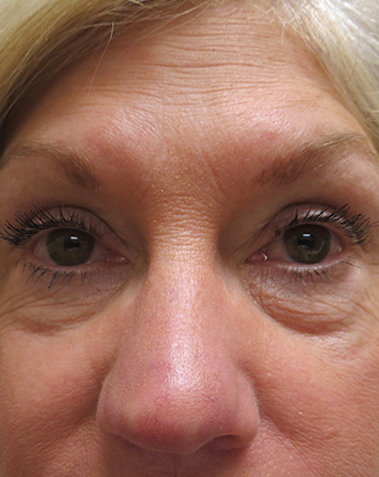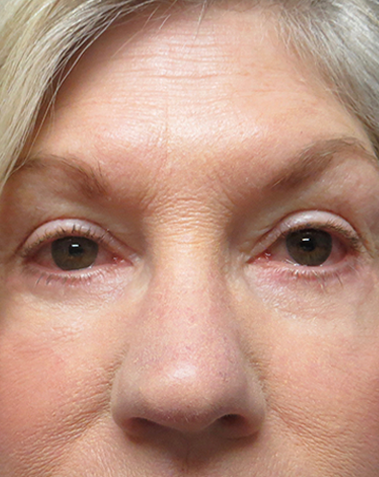
Plastic and reconstructive surgeon Dr. Adam Boettcher describes what patients can expect before and after blepharoplasty, also known as eyelid surgery
Eyelid surgery, or blepharoplasty, is a very common procedure that has both functional and aesthetic benefits. According to the American Society of Plastic Surgeons, it’s the second-most-common procedure performed in the United States.
As we age, our eyelid skin naturally loses collagen and protein fibers, which can cause sagging around the eyes. Upper eyelid surgery addresses drooping eyelid folds above the eye, which can obstruct vision. We perform lower eyelid surgery to minimize bags or hollowing under the eyes. Some patients opt to receive double eyelid surgery, which includes both an upper and lower blepharoplasty.
If you’re considering blepharoplasty, here are some of the main questions that my patients want to know about the procedure, coverage costs, results, and aftercare:
- What to Expect: Blepharoplasty Before and After
- Blepharoplasty Recovery and Aftercare
What to Expect: Blepharoplasty Before and After
Blepharoplasty patients can expect a more youthful eye shape, alert and well-rested-looking eyes, and improved peripheral vision.
Before Blepharoplasty Surgery
During your blepharoplasty consultation, we’ll talk about your overall health, medical history, and desired outcomes. Good blepharoplasty candidates are generally healthy, non-smokers, and don’t have serious eye conditions.
I’ll examine your anatomy, take a few photographs, and we’ll discuss which procedural approaches are best suited to meet your goals. It is important to have a trained surgeon perform this evaluation to determine the cause and proper treatment of any visual field obstruction. We’ll also talk about anesthesia, eyelid surgery risks and benefits, medications, and aftercare instructions.
Other tests, such as visual field testing and eye exams, can be performed by your optometrist or ophthalmologist to support insurance claims. Insurance companies will usually cover upper lid blepharoplasty when a patient’s eyelids significantly obstruct their visual field, negatively affecting everyday activities.
We perform blepharoplasties in both our office’s licensed ambulatory surgical center, as well as in our office procedure room. Our eyelid surgery patients can go home after the procedure, but they’ll need somebody to drive them.
During Blepharoplasty Surgery
Upper lid blepharoplasty can be performed under local anesthesia or with the addition of IV or general anesthesia. For lower eyelid blepharoplasty the addition of IV sedation or general anesthesia is common. It is important to discuss your goals with your surgeon when deciding on the right method of anesthesia for your procedure. During upper eyelid surgery, we make a small incision hidden by the eyelid’s natural crease. Through this opening, we’ll remove excess skin and correct any asymmetry in the upper eyelid crease.
For lower eyelid surgery, we typically make an incision from within the eyelid to remove or reposition fat deposits. Some patients also require excision of the excess lower eyelid skin, which is typically performed through an incision right below the lash line. Lower eyelid blepharoplasty is often combined with laser resurfacing of the lower eyelid skin to tighten and smooth the appearance. Finally, we’ll close the incisions and will see you again in a week to remove the sutures.
After Blepharoplasty Surgery
Eyelid surgery can yield some dramatic and positive results. Blepharoplasty patients usually feel more confident and have improved visibility within weeks of the procedure. Here are just a few of the benefits that our patients report after undergoing eyelid surgery:
- Improved peripheral vision.
- More youthful eye shape.
- Skin rejuvenation around the eyes.
- Eyes appear more rested.
- Improved confidence.
Blepharoplasty patients can expect to achieve long-lasting and noticeable results within two months, based on healing. Many patients return to work within two weeks. As the eye area recovers, swelling and bruising will decrease, and incision lines will continue to fade.


Here is one of our patients who had a lower eyelid procedure. As you can see her eyes look more well-rested and alert due to less sagging under the eyes. Fine lines and other signs of aging under the eyes have also been improved, achieving a more youthful appearance.
Blepharoplasty Recovery and Aftercare
Directly after surgery, you will wait in a recovery room where we’ll monitor you. You may experience temporarily blurred vision from the ointment we put in your eyes during surgery, watering eyes, or double vision shortly after surgery. It’s also not uncommon for eyelid surgery patients to have swelling, bruising, and some discomfort while healing. I tell my patients to take it easy for at least a week, which includes no heavy lifting or intense exercise. Most patients feel well enough to return to work within a week or two.
Here are some other important eyelid surgery aftercare instructions I explain to patients:
- Incision Aftercare: Don’t rub your eyes, and be gentle around the incisions. Depending on how your incisions are closed, we may have you return in a week to remove the sutures.
- Cold Compresses: On the day of your surgery, apply compresses made with damp gauze or a clean damp washcloth to the eyes for 15-minute intervals (15 minutes on, 15 minutes off). On day two, apply cold compresses for 15 minutes at a time, around five times throughout the day.
- Prescriptions: We’ll prescribe antibiotic eye ointment to protect the incisions and promote healing. Patients can take over-the-counter pain medications, such as Tylenol, to make them more comfortable.
- Contacts: Don’t wear contacts for the first two weeks after surgery.
- Bathing: You can shower after 48 hours, but try to keep the eye area dry. Don’t submerge your head in water for 3-4 weeks to reduce the risk of infection.
Book Your Eyelid Surgery Consultation Today
If you’d like to learn more about eyelid surgery, we’d love to bring you in for a consultation. Our team of board-certified plastic surgeons and experienced providers at Plastic Surgeons of Northern Arizona can answer your questions and discuss your goals.




